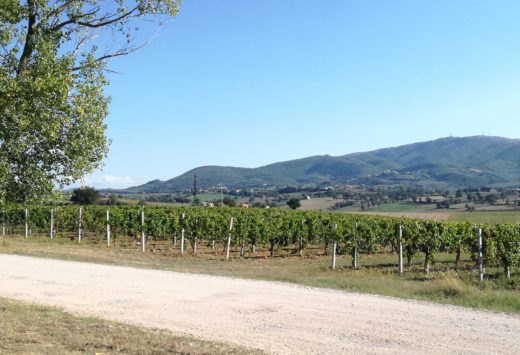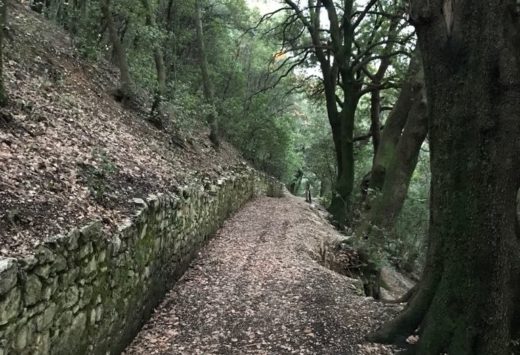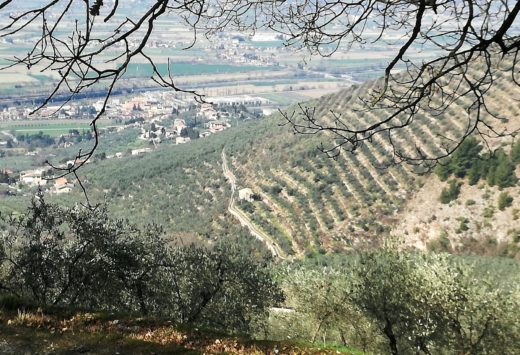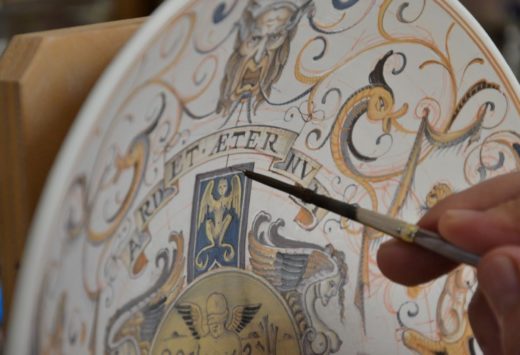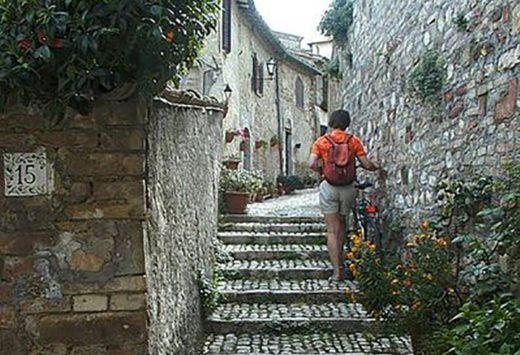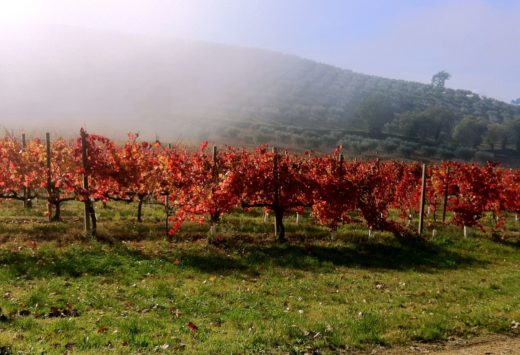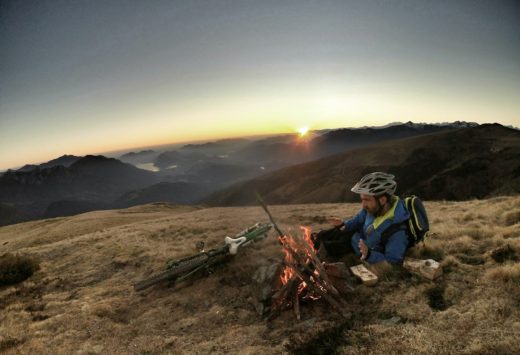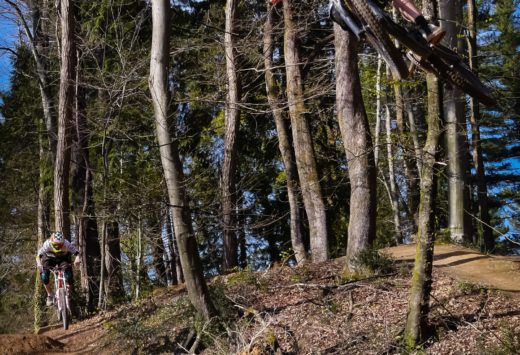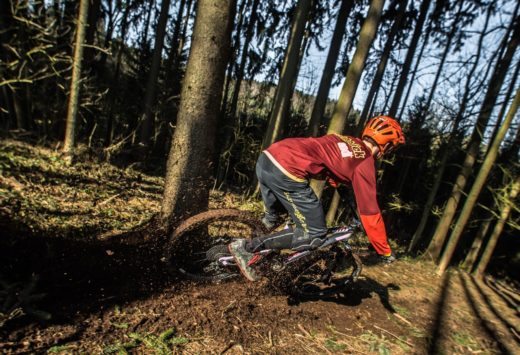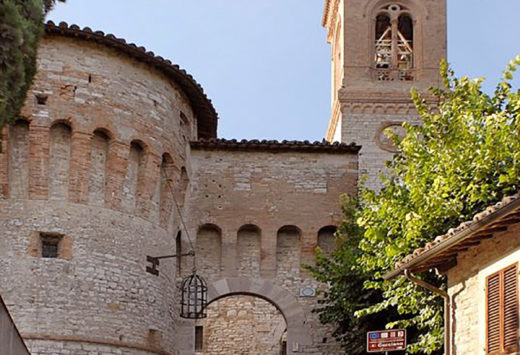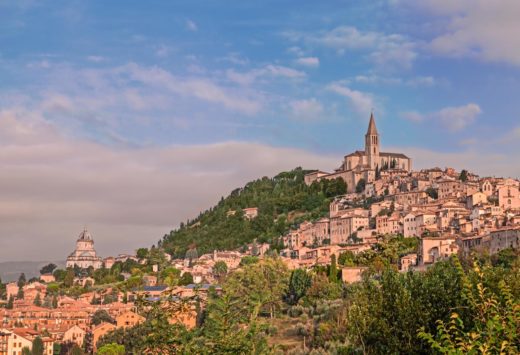The National Gallery of Umbria (Italian: Galleria Nazionale dell’Umbria) boasts one of the largest and most important museum collections in Italy.
Housed in the Palazzo dei Priori, it features a repertoire of artworks ranging from the XIII to the XIX Centuries.
The Gallery begins with the Academy of the Arts of Drawing established in the XVI Century and gained prominence between the end of the XVII century and the beginning og the XIX, thanks to the Napoleonic Empire first and the Kingdom of Italy later.
In 1863 a pubblic art gallery that could house all those works that, until then, were scatter around the region. The gallery is named after Pietro Vannucci, also known as Il Perugino.
In 1918 the art gallery is nationalised and renamed “Pietro Vannucci Royal Gallery”. Since then the collection kept growing and became one of the most prominent of Italy.
The numerous renovation works that many rooms of Palazzo Priori had to undergo, meant that the Gallery had to change several locations throughout the years.
Since 2006 the museum the museum has been arranged on two floors of Palazzo dei Priori, occupying 4000 square metres in total. The collection is currently organised in chronological order and by school, it includes artists such as: Gentile Da Fabriano, Beato Angelico, Arnolfo di Cambio, Piero della Francesca. It also focuses on artist born in the region like Bartolomeo Caporali, Benedetto Bonfigli, Fiorenzo di Lorenzo, Pietro Vannucci detto Il Perugino, Bernardino di Betto also known as Pinturicchio and their disciples.
THE XII CENTURY
One of the most signifcant sculptures of the time, on display in the gallery, is the Cristo Deposto (Dead Christ) 1236, as a part of a series of figures depicting the deposition of Christ. There are also five Carrara marble sculptures by Arnolfo di Cambio, realised between 1278 amd 1281, which were apparently destined to a fountain on the main city street, known today as Corso Vannucci. The same area also includes the two tiles, sculpted by the Pisano borthers, they were part of Fontana Maggiore and depict Rome and the Capitoline Wolf.
The most representative painter of the XIII Century undubitably is the Master of Saint Francis(whose first works were in the Basilica of Saint Francis of Assisi, hence the name). The Umbrian National Gallery features three of the anonymous painter’s works: La Grande Croce of 1272, La Croce a due Facce, of the same year, and the Paliotto, 1262. Other notable works in the same are are: the Dossale del Maestro di Farneto , 1290 and Dossale di Vigoroso da Siena, 1291.
THE XIV CENTURY
This century begins with Madonna with Child, 1304, by Duccio di Buoninsegna. Other notable works include two-faced panels with Saint Paul – Saint Laurence e Saint Peter and Saint Ercolano, the latter is depicted as he is holding up the city of Perugia. Giotto’s followers include Marino from Perugia, with his Madonna with Child and Saints, 1317, Puccio Capanna and Giovanni di Bonino, respectively with Madonnaon the Throne with Child and Crucifixion, circa 1340, and glass wall with Crucifixion, circa 1345.
The second half of this century s also characterised by a stron presence of the Senese School, which ha its own section in the museum with works like: the Forsivo Altarpiece by Luca Tommé, 1370, Madonna with Child and Saints by Bartolo di Fredi and little crucifixion by Nicolò di Buonaccorso.
THE XV CENTURY
There is also a part dedicated to the influence of international Gothic with the Pietralunga Altairpiece by Ottaviano Nelli, 1404, the Madonna with Child and Angels, also 1404, by Gentile da Fabriano, Crucifixion Fresco, by Jacopo Salimbeni, circa 1420.
Representing the third and fourth decade and the continous mutations in Reinassance tendencies: Madonna with Child and Saints, 1439, by Pietro di Nicola Baroni and the Santa Giuliana Altairpiece, 1438, by Domenico di Bartolo.
Also the Florentine School is genereously represented, for example with the S. Domenico Altairpiece, 1447, by Beato Angelico, which was inspiration to many other painters, including Benozzo Gozzoli, con with the Pala della Sapienza Nuova, 1456. Another one is the Saint Anthony Altiaripiece painted between 1455 and 1468 by Piero della Francesca.
PERUGIAN REINASSANCE
Reinassance in perugia could safely be defined a “school”. There are many figures who contributed to this distinctive current and many of their works can be found in the National Gallery of Umbria:
Bonfigli Benedetto is the first Reinassance Perugian painter, his works include Madonna col Bambino e angeli musicanti, 1450, Annunciazione and S. Lucia, 1450-53, the Gonfalone di S. Bernardino, 1464, as well as the series of frescoes Storie di S.Ludovico da Tolosa.
Bartolomeo Caporali with Madonna col bambino e angeli, 1465, the Trittico della Confraternita della Giustizia, 1475, and Adorazione dei Pastori, 1478-79.
Fiorenzo Di Lorenzo with: S.Sebastiano, 1475-79, La Nicchia di S. Francesco al Prato, 1487, the Polittico dei Silvestrini, 1493
Perugino is definietly one of hosehold names of Umbrian painting. Pietro Vannucci started his training in Perugia and then studied in Florence, first with Piero della Francesca and then with Verrocchio. After working extensively in Perugia, including some pieces at Palazzo dei Priori, he became rather well-known and was hired by the Pope for some works, also at the Sistine Chapel (Delivery of the Keys, 1481) and, by the end of the XV Century, was probably the most influential Italian painter. Many of his works are kept in the Gallery, notably: Saint Bernardino Curing a Young Girl , 1473 (first of a series of eight tempera-on-panel paintings showing miracles associated with Bernardino of Siena), Madonna della Consolazione, 1496-98, Lamentation over the Dead Christ , 1495, Tezi Altarpiece, 1500, Gonfalon of Justice , 1501, and Sant’Agostino Altarpiece.
Pinturicchio: Born in Perugia in 1454, he died in Sien in 1513. He was influenced by many Perugian Master, especially Bartolomeo Caporali. He was also a disciple and collaborator of Perugino, whom he helped with many famous works, including the Saint Bernardino series and paintings in the Sistine Chapel. He often worked in Rome, also for the Pope, where he became famous for the elegance of his decorations and unquestionable talent. In the gallery you can admire the Santa Maria dei Fossi Altarpiece, 1495-96, one of the most representative pieces of the Perugian School. The mastery and attention to detail of this work are just extraordinary.
XIV CENTURY
There are also various pieces from this period, created mainly by artists from outside of Perugia, also thanks to the renewed power of the Church which commissioned many works. An example is Stories of Braccio Fortebraccio da Montone, painted by Lattanzio Pagani and Tommaso Bernabei in 1545-48. Local painters include Orazio Alfani and his Sacred Family and The Rest in the Flight intto Egypt, circa 1560. Another notable painting is the Nativity of the Virgin dated 1561 and executed by Dono Doni. There are also flamish painters including Hendrick van den Broeck with the Adoration of the Magi, 1563, and the Crucifixion, 1565.
Other important works comprise the Holy Family with the Baptist, 1573, painted by Raffaellino del Colle and the lAdoration of the Shepherds by Marcello Venusti.
XVII AND XVIII CENTURY
The main exponent of the XVII Century in the gallery is Ventura Salimbeni,with the Virgin with Baby and S. Giovvannino , 1606-1608. Then Orazio Gentileschi, with Saint Cecilia Plays the Spinet and Angel, 1615, and Valentin de Boulogne, with Samaritan Woman at the Well, 1622, both Caravaggisti.
Also the XVIII Century is well represented. The Vision of Saint Bernard, painted by Giovanni Odazzi in 1720 is one of the most notable pieces. There are also works which had come from rome, such as Mary Magdalene’s Holy Communion, Francesco Mancini 1732, Mary Magdalene’s Holy Communion, Sebastiano Conca 1738, and Saint Ambrogio Absolves Emperor Theodosius, Pierre Subleyras 1745.
Finally, the National Gallery of Umbria features numerous collections, inlcuding a large one of Perugian Tablecloths, which belonged to various private collectors before being purchased by the State. The are also exhibits of gold artifacts – mainly coming from Perugian City Muesums – collected from 1863. Unfortuantely the origins of most items were never listed, so they remain unknown to this day.
Other collections come from the sacristy of the chirch of S. Domenico, itemised in the XV century as a testimony of local craftmasnhip.



